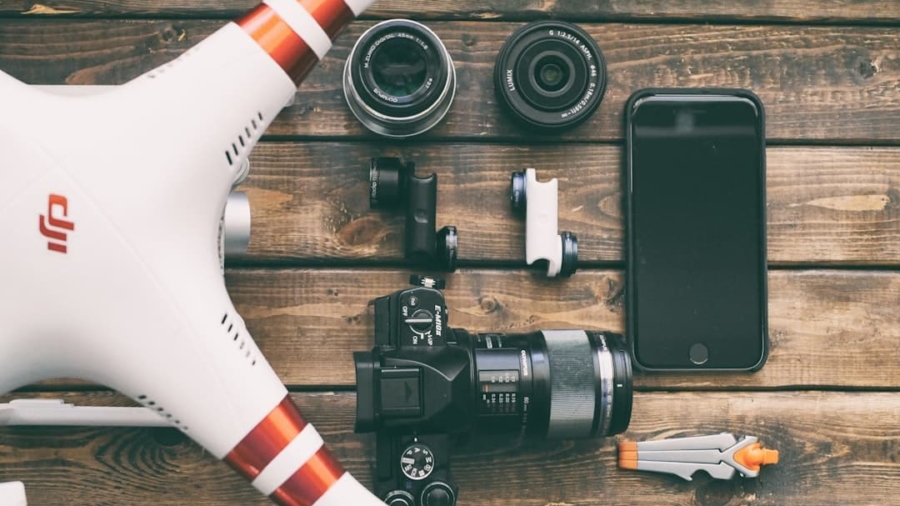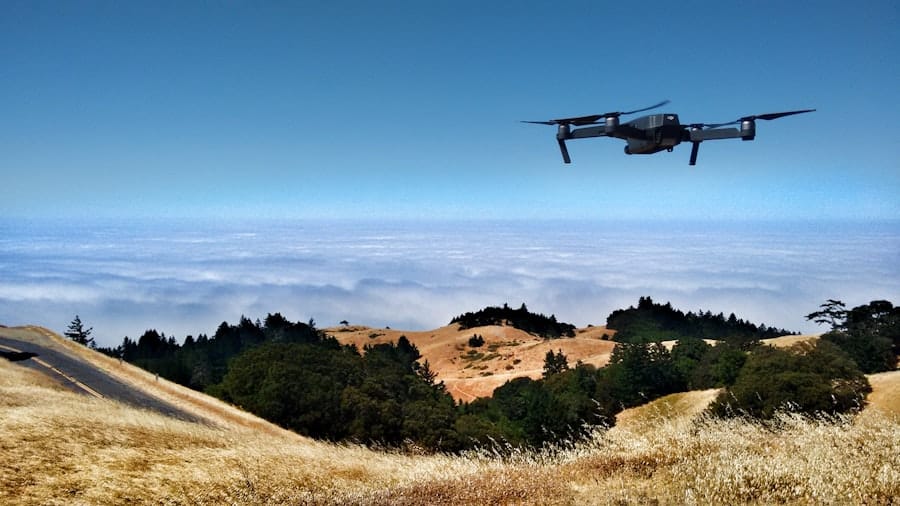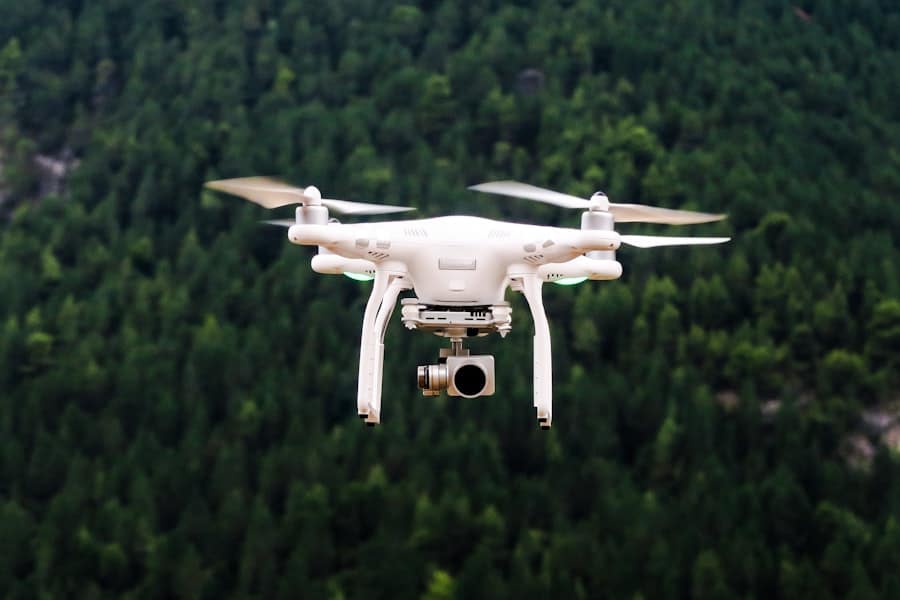The increasing prevalence of air pollution has emerged as a critical global concern, prompting the need for innovative monitoring solutions. Traditional methods of air quality assessment often rely on stationary ground-based sensors, which can provide limited data and may not capture the dynamic nature of air pollution. In contrast, the advent of drone technology has revolutionized the field of environmental monitoring, offering a versatile and efficient means to gather real-time data on air quality.
Drones equipped with advanced sensors can traverse various terrains, reaching areas that are otherwise difficult to access, thereby providing a comprehensive view of air pollution levels across different environments. The integration of drones into air pollution monitoring systems allows for a more nuanced understanding of pollutant dispersion patterns. By flying at varying altitudes and speeds, drones can collect data from multiple layers of the atmosphere, revealing how pollutants behave under different meteorological conditions.
This capability is particularly valuable in urban settings, where pollution sources are often localized and can fluctuate rapidly due to traffic patterns, industrial activities, and weather changes. As cities continue to grow and face increasing environmental challenges, the role of drones in real-time air pollution monitoring is becoming increasingly vital.
Key Takeaways
- Drones offer real-time air pollution monitoring, providing valuable data for environmental research and policy-making.
- Advantages of using drones for air pollution monitoring include their ability to access hard-to-reach areas and cover large geographical areas quickly.
- Current challenges and limitations of drone technology for air pollution monitoring include limited payload capacity and regulatory restrictions.
- Future developments in drone technology for air pollution monitoring may include improved sensors and data analysis capabilities.
- Regulatory and privacy considerations for drone-based air pollution monitoring are important for ensuring compliance with laws and protecting sensitive information.
Advantages of Using Drones for Real-Time Air Pollution Monitoring
One of the most significant advantages of utilizing drones for air pollution monitoring is their ability to provide high-resolution spatial data. Unlike traditional monitoring stations that offer data points at fixed locations, drones can cover extensive areas in a relatively short amount of time.
For instance, a drone can be deployed to monitor emissions from a specific industrial site or assess the impact of traffic congestion on urban air quality, providing insights that are crucial for effective environmental management. Moreover, drones can be equipped with a variety of sensors that measure different pollutants, including particulate matter (PM), nitrogen dioxide (NO2), sulfur dioxide (SO2), and volatile organic compounds (VOCs).
For example, a drone equipped with a laser-based sensor can detect PM concentrations while simultaneously measuring gas emissions from vehicles. This level of detail is essential for developing targeted interventions and policies aimed at reducing air pollution.
Current Challenges and Limitations of Drone Technology for Air Pollution Monitoring
Despite the numerous advantages that drones offer for air pollution monitoring, several challenges and limitations persist. One primary concern is the regulatory landscape surrounding drone operations. Many countries have stringent regulations governing drone flights, particularly in urban areas where airspace is congested.
These regulations can limit the operational range and altitude of drones, potentially hindering their effectiveness in capturing comprehensive air quality data. Additionally, obtaining the necessary permits for drone flights can be a time-consuming process, which may delay critical monitoring efforts. Another significant challenge is the technical limitations associated with drone sensors.
While advancements have been made in sensor technology, many existing sensors still struggle with issues such as calibration, sensitivity, and accuracy. For instance, some sensors may provide inconsistent readings under varying environmental conditions or may not be sensitive enough to detect low concentrations of pollutants. Furthermore, the integration of multiple sensors on a single drone can lead to increased weight and power consumption, which may affect flight duration and operational efficiency.
Addressing these technical challenges is essential for maximizing the potential of drones in air pollution monitoring.
Future Developments and Innovations in Drone Technology for Air Pollution Monitoring
The future of drone technology in air pollution monitoring is poised for significant advancements as research and development efforts continue to evolve. One promising area is the integration of artificial intelligence (AI) and machine learning algorithms into drone operations. By analyzing vast amounts of data collected during flights, AI can help identify patterns and correlations that may not be immediately apparent to human analysts.
This capability could enhance predictive modeling efforts, allowing for more accurate forecasts of air quality based on real-time data inputs. Additionally, innovations in sensor technology are expected to improve the accuracy and reliability of measurements taken by drones. Researchers are exploring the use of miniaturized sensors that can detect a wider range of pollutants with greater sensitivity.
These advancements could enable drones to operate effectively in diverse environments, from urban centers to remote industrial sites. Furthermore, the development of hybrid drones that combine fixed-wing and multi-rotor designs may enhance flight efficiency and extend operational ranges, allowing for more comprehensive monitoring campaigns.
Regulatory and Privacy Considerations for Drone-Based Air Pollution Monitoring
As drone technology becomes increasingly integrated into air pollution monitoring efforts, regulatory frameworks must adapt to address emerging challenges. Governments and regulatory bodies need to establish clear guidelines that balance the benefits of drone operations with safety and privacy concerns. For instance, while drones can provide valuable data on air quality, their use in populated areas raises questions about privacy infringement and data security.
Ensuring that drone operators adhere to strict privacy protocols will be essential to maintain public trust and support for these initiatives. Moreover, collaboration between regulatory agencies, environmental organizations, and technology developers is crucial for creating a cohesive framework that facilitates responsible drone use. This collaboration can help streamline permitting processes while ensuring that safety standards are upheld.
Additionally, public engagement initiatives can educate communities about the benefits of drone-based monitoring and address any concerns related to privacy or safety. By fostering an open dialogue between stakeholders, it is possible to create an environment conducive to innovation while safeguarding public interests.
Case Studies of Successful Drone-Based Air Pollution Monitoring Projects
Several successful case studies illustrate the effectiveness of drone technology in air pollution monitoring across various contexts. One notable example is the use of drones by researchers at the University of California, Los Angeles (UCLA) to monitor air quality in Los Angeles County. The team deployed drones equipped with advanced sensors to measure levels of nitrogen dioxide and particulate matter in real-time.
The data collected provided valuable insights into pollution sources related to traffic congestion and industrial emissions, enabling local authorities to implement targeted interventions. Another compelling case study comes from the city of Amsterdam in the Netherlands, where drones have been utilized to monitor air quality in urban environments. The city partnered with technology companies to develop a fleet of drones capable of collecting high-resolution air quality data across different neighborhoods.
This initiative not only helped identify pollution hotspots but also engaged citizens by providing them with real-time information about local air quality conditions through a mobile app. Such projects demonstrate how drone technology can enhance public awareness and foster community involvement in environmental issues.
Potential Impact of Drone-Based Air Pollution Monitoring on Public Health and Environmental Policy
The implementation of drone-based air pollution monitoring has far-reaching implications for public health and environmental policy. By providing real-time data on air quality, drones can empower policymakers to make informed decisions regarding environmental regulations and public health initiatives. For instance, if a drone identifies elevated levels of harmful pollutants in a specific area, local authorities can take immediate action to mitigate exposure risks for residents.
This proactive approach can significantly reduce health risks associated with poor air quality, such as respiratory diseases and cardiovascular issues. Furthermore, the data generated by drone monitoring can inform long-term environmental policies aimed at reducing emissions from various sources. Policymakers can utilize this information to develop targeted strategies that address specific pollution sources, whether they be vehicular emissions or industrial discharges.
By leveraging real-time data from drones, governments can create more effective regulations that adapt to changing environmental conditions and public health needs.
The Role of Drones in Shaping the Future of Air Pollution Monitoring
As we look toward the future, it is clear that drones will play an increasingly pivotal role in shaping the landscape of air pollution monitoring. Their ability to provide real-time data across diverse environments offers unprecedented opportunities for understanding and addressing air quality challenges. While challenges remain regarding regulatory frameworks and sensor technology, ongoing innovations promise to enhance the effectiveness and reliability of drone-based monitoring systems.
The integration of drones into environmental monitoring not only enhances our understanding of air pollution dynamics but also fosters greater public engagement in environmental stewardship. As communities become more aware of local air quality issues through accessible data provided by drones, there is potential for increased advocacy for cleaner air policies and practices. Ultimately, the continued evolution of drone technology will be instrumental in advancing our efforts to combat air pollution and protect public health in an increasingly polluted world.
In addition to the advancements in real-time air pollution monitoring using drones, there are also innovative tools available for content creation and optimization. NeuronWriter is a powerful tool that can help improve SEO and enhance content quality. To learn more about this tool, check out the article




